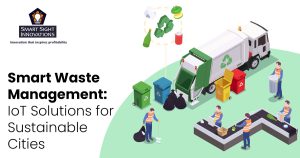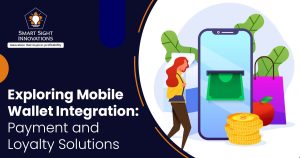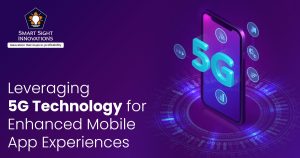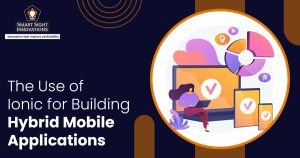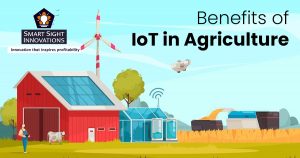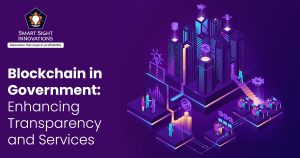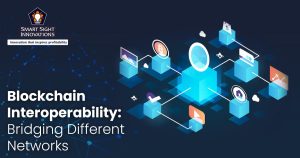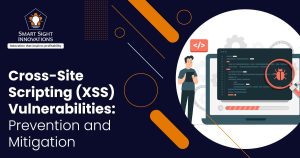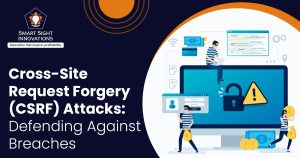 Offline Capabilities and Its Importance in Mobile Apps
Offline Capabilities and Its Importance in Mobile Apps
Offline capabilities enable apps to function seamlessly even without an active internet connection, providing users with uninterrupted access to essential features and content. The importance of offline capabilities in mobile apps cannot be understated. Some key reasons are:
1. Enhanced Reliability
Offline capabilities make apps more reliable by reducing their dependence on a stable internet connection. Users can access critical information and perform essential tasks regardless of their location or the availability of network coverage.
2. Expanded User Base
By accommodating users in areas with limited or sporadic internet access, apps with offline capabilities can tap into a broader user base. This flexibility can lead to increased user retention and user acquisition.
3. Improved User Experience
Users expect a seamless and uninterrupted experience from their mobile apps. Apps with seamless offline capabilities deliver on these expectations, resulting in higher user satisfaction. When users can access content, perform tasks or complete transactions without disruption, they are more likely to continue using and recommending the app.
4. Increased Engagement
Apps that function smoothly offline encourage more frequent usage. Users are more engaged when they know they can rely on an app’s offline features. This heightened engagement can lead to increased user retention and loyalty.
5. Increased Productivity
In business and productivity apps, offline capabilities enable users to work efficiently while on the go. They can create, edit and save data locally, syncing it with the cloud once a connection is reestablished.
6. Cost Efficiency
For users with limited data plans, seamless offline experiences can result in significant cost savings. By reducing the need for continuous data connectivity, users can avoid unexpected data charges and better manage their mobile expenses.
7. Competitive Advantage
In a saturated app market, offering seamless offline experiences can set an app apart from the competition. It becomes a key differentiator, attracting users who value reliability and functionality in offline scenarios.
User Expectations for Offline Usage
Users have certain expectations from offline capabilities in mobile apps and meeting these expectations is vital for app success. Some common user expectations are:
-
Access to Cached Content
Users anticipate that previously viewed content, such as articles, images or documents, will be available for offline access.
-
Offline Transactions
E-commerce and banking apps should allow users to make transactions even when they are offline.
-
Offline Navigation
Maps and navigation apps should offer offline maps and ensure navigation without data connection.
-
Offline Editing
Productivity apps, including note-taking and document editing tools, should permit users to create and edit content offline.
Building Resilient Mobile Apps by Implementing Offline Features
Implementing offline features in your mobile app involves creating a robust architecture, handling data access and embracing offline-first design principles. These elements are essential to ensure your app remains reliable and user-friendly even when users face limited or no internet connectivity.
1. Offline-Ready Architecture
Creating an offline-ready architecture is the foundational step in building a mobile app capable of functioning offline. This architecture involves some key components:
- Local Data Storage
Utilize local databases such as SQLite or Realm to store essential data locally on the user’s device. This enables the app to access critical information without relying on a remote server.
- Synchronization Engine
Develop a synchronization engine that manages data transfer between the local device and the server. This engine should handle data conflicts, queue data for upload/download and manage sync intervals effectively.
- Caching Strategies
Implement smart caching strategies like in-memory caching, disk-based caching or distributed caching, to store frequently accessed data, images and resources locally. Caching optimizes the app’s performance and reduces the need for continuous network requests.
- Data Models and APIs
Design data models and APIs that accommodate offline scenarios. This may involve structuring data for offline use, supporting background sync and handling offline errors gracefully.
2. Handling Offline Data Access
Efficiently handling offline data access is pivotal to ensure a seamless user experience. Some considerations are:
- Data Availability
Clearly define which app functionalities and data should be available offline. Prioritize the most critical features and content to optimize user experience in offline mode.
- Data Synchronization
Implement a reliable synchronization process that updates local data with changes from the server when a network connection is available. Handle conflicts and ensure data consistency.
- Offline Transactions
E-commerce or banking apps should be able to allow users to perform transactions offline. This can be achieved by queuing the actions and executing them when connectivity is restored, providing users with a smooth transaction experience.
- Offline Editing
Enable users to create and edit content offline, such as drafting emails, documents or notes. Ensure that local edits are synchronized correctly with remote data when online.
3. Offline-First Design Principles
Embracing offline-first design principles as below, is pivotal for creating a user-friendly offline experience.
- Progressive Enhancement
Develop your app’s core functionality with offline capabilities in mind from the beginning. Offline features should be an enhancement rather than an afterthought.
- Offline-Friendly UI
Design your user interface to gracefully handle offline scenarios. Provide clear indications of offline status and guide users on what actions they can perform offline.
- Optimized User Flows
Tailor user flows to accommodate offline usage. For instance, in a messaging app, allow users to compose messages offline and automatically send them when online.
- Minimal Data Dependency
Minimize dependencies on real-time data for non-essential features. Design your app to function as much as possible using locally stored data.
Offline Authentication: Ensuring Security and Convenience
Offline authentication in mobile apps is a critical aspect of providing secure access to user accounts and sensitive information when an internet connection is unavailable. This authentication method is especially vital for maintaining data privacy and user trust in various scenarios. Below are some key elements of offline authentication that include user authentication, biometric authentication and security considerations.
1. Offline User Authentication
Offline user authentication involves verifying a user’s identity without relying on a network connection. It typically utilizes stored credentials or tokens for authentication. This method ensures that users can access their accounts and data even when they’re offline, providing a seamless and secure experience.
2. Biometric Authentication in Offline Mode
Biometric authentication methods, such as fingerprint or facial recognition, have gained popularity due to their convenience and security. Many mobile devices store biometric data locally and allow for offline authentication. Users can unlock their devices or access specific apps using biometrics without the need for an internet connection, enhancing both security and user experience.
3. Security Considerations
Security is paramount in offline authentication. Here are some key considerations:
- Data Encryption
Ensure that stored authentication data, including passwords and biometric templates, are encrypted using strong encryption algorithms. This protects user data from unauthorized access.
- Secure Storage
Store authentication data in a secure enclave or protected storage on the device to prevent tampering or extraction by malicious actors.
- Biometric Data Protection
Handle biometric data with care, following best practices for biometric template storage. Use biometric APIs provided by the operating system to ensure data protection.
- Offline Access Control
Implement robust access control mechanisms to prevent unauthorized users from accessing the app or device offline.
- Fallback Authentication
Consider implementing fallback authentication methods, such as PINs or passcodes, in case biometric authentication fails or is unavailable.
Push Notifications in Offline Mode
Push notifications are a powerful tool for engaging users in mobile apps that provide real-time updates and information. By sending notifications when offline, storing them for later delivery and prioritizing their relevance, apps can provide users with a seamless experience, ensuring they stay informed and engaged, regardless of their online or offline status.
-
Sending Notifications When Offline
Sending notifications when the user’s device is offline is a common challenge. To address this, apps often use a “best effort” approach, where notifications are sent to the device when a network connection becomes available. This ensures that users receive important updates, messages or alerts, even if they were offline when the notification was initially triggered.
-
Storing Notifications for Later Delivery
To guarantee that notifications reach their intended recipients, apps store notifications on the server until the user’s device is online again. This mechanism ensures that users don’t miss critical information and that notifications are delivered promptly when connectivity is restored.
-
Notification Priority and Relevance
Not all notifications are created equal. Apps must consider the priority and relevance of notifications to avoid overwhelming users with less important messages. Implementing notification channels or categories allows users to customize their notification preferences, ensuring they receive only the most relevant alerts.
Testing Offline Capabilities: Ensuring Reliability and Resilience
Testing offline capabilities in mobile apps is an important phase in app development for delivering a robust and reliable mobile app. It involves the use of testing tools and frameworks, simulating offline scenarios and conducting user acceptance testing for offline features to ensure that the app functions smoothly under various connectivity conditions. By thoroughly testing offline features, developers can enhance the user experience, boost app reliability and mitigate issues that could lead to user dissatisfaction.
-
Testing Tools and Frameworks
Utilizing specialized testing tools and frameworks is essential for comprehensive offline capability testing. Tools like Charles Proxy, Postman and MockWebServer enable developers to simulate network conditions, intercept requests and monitor data exchange between the app and servers. Automated testing frameworks, such as Appium and Espresso, can also be adapted to assess how the app behaves in offline scenarios.
-
Simulating Offline Scenarios
Simulating offline scenarios is crucial to assess how the app behaves when there’s limited or no internet connectivity. Testers can simulate offline conditions by disabling network connections, introducing latency or limiting bandwidth. This testing phase helps identify potential issues related to data synchronization, error handling and offline data access.
-
User Acceptance Testing (UAT) for Offline Features
UAT is a vital step to validate offline features from a user perspective. Real users or representatives should participate in UAT to evaluate the app’s performance, usability and reliability in offline scenarios. Their feedback helps uncover usability issues, design flaws or unexpected behaviors that might not be evident during automated testing.
Managing Offline Content and Enhancing User Experience and Efficiency
Managing offline content is essential for delivering a seamless and user-friendly mobile app experience. This involves ensuring content availability for offline usage, efficiently downloading and caching media and optimizing storage space to strike a balance between functionality and device resources. A well-executed offline content management strategy contributes significantly to user satisfaction and the overall success of the app.
1. Content Availability
Content availability for offline usage is a fundamental aspect of offline content management as it involves determining which portions of an app’s content should be accessible when offline. Key considerations include:
- Critical Data
Identify and prioritize the most critical data that users may need offline. This often includes documents, articles, saved messages and user-generated content.
- Selective Sync
Implement selective synchronization features that allow users to choose which content they want available offline, reducing unnecessary data consumption and storage use.
- Smart Caching
Use intelligent caching mechanisms to predict and pre-fetch content that users are likely to access offline based on their usage patterns.
- Offline Functionality
Design the app’s features to gracefully degrade when offline, offering limited but essential functionality, such as read-only access to cached data.
2. Downloading and Caching
Downloading and caching media efficiently is vital for managing offline content. This involves storing images, videos, audio files and other media locally on the user’s device. Key considerations include:
- Lazy Loading
Implement lazy loading techniques to download media only when users request it, reducing initial load times and conserving bandwidth.
- Content Expiry
Set expiration rules for cached media to ensure that outdated content is automatically replaced with fresh data when the app is online.
- Offline Media Playback
Allow users to download and play media offline, providing a seamless entertainment experience, even when there’s no internet connectivity.
- Optimized Formats
Consider using optimized media formats that strike a balance between quality and file size, reducing storage space requirements.
3. Optimizing Storage Space
Optimizing storage space is essential to prevent excessive use of a user’s device resources and ensure that the app remains responsive and efficient. Key considerations include:
- Cache Management
Implement cache management strategies to periodically clean and purge outdated or less frequently accessed content, freeing up storage space.
- User Control
Provide users with control over how much storage space the app can consume and the ability to clear cached data manually.
- Compression
Utilize data compression techniques for media and files, reducing the storage footprint without compromising quality.
- Streaming Options
Consider offering streaming options for media content, allowing users to stream content instead of downloading it for offline use.
Challenges and Limitations of Offline Capabilities in Mobile Apps
While offline functionality in mobile apps is unquestionably valuable, both app developers and users must be aware of the challenges and limitations that come with it. Addressing these challenges requires careful planning, robust architecture, efficient data synchronization strategies and a commitment to delivering a seamless user experience. Here are some of the key challenges of offline capabilities in mobile apps:
1. Data Synchronization Complexity
One of the central challenges is managing data synchronization between the local device and remote servers. Achieving consistency across devices, handling conflicts and ensuring data integrity can be complex, especially in apps with large and complex data sets.
2. Data Staleness
Maintaining up-to-date data in offline mode can be challenging. Users expect access to the most recent information, but syncing data in real-time may not always be feasible, leading to potential data staleness issues.
3. Increased Development Complexity
Building offline capabilities adds complexity to the app development process. Developers must consider various scenarios, error handling and recovery mechanisms, which can increase development time and effort.
4. Storage Limitations
Mobile devices have limited storage capacity. Storing large amounts of offline data can quickly consume valuable storage space, potentially causing performance issues and frustrating users.
5. Battery Consumption
Offline capabilities often involve background processes like data syncing, which can drain the device’s battery. It is crucial to strike a balance between utility and energy efficiency.
6. User Experience Challenges
Designing an intuitive and seamless user experience in offline mode can be tricky. Apps must provide clear feedback to users about their offline status and limit access to features that depend on real-time data.
7. Security Risks
Storing sensitive data locally on the device poses security risks. If not properly secured, offline data can be vulnerable to unauthorized access or theft if the device is lost or stolen.
8. Complexity of Conflict Resolution
When multiple users or devices can modify the same data offline, resolving conflicts can be challenging. Determining which version of the data takes precedence without user intervention can be complex.
9. Initial Setup and Authentication
Some apps require initial setup or user authentication, which can be challenging if users don’t have an internet connection during the first launch. Implementing a smooth onboarding process for offline users is crucial.
10. Testing and Quality Assurance
Thoroughly testing offline capabilities, including simulating various offline scenarios, can be time-consuming. Ensuring that the app behaves correctly in all possible offline situations is essential but can be challenging.
11. User Expectations
Users often have high expectations for offline capabilities. They expect the app to seamlessly transition between online and offline modes, which can be difficult to achieve in practice.
12. Compatibility Across Devices
Ensuring that offline capabilities work consistently across a wide range of devices, operating systems and network conditions can be challenging. Device-specific irregularities and limitations may arise.
Regulatory and Compliance Considerations in Offline Capabilities
It’s crucial to take into account regulatory and compliance considerations, especially concerning data protection and privacy when developing mobile apps with offline capabilities. Failure to comply with these regulations can result in legal consequences and harm a company’s reputation.
-
Compliance with Data Protection Regulations
App developers must ensure that their offline-capable apps comply with data protection regulations, which vary by region. The most notable of these regulations is the General Data Protection Regulation (GDPR) in the European Union and other similar laws globally.
-
GDPR and Offline Data Storage
GDPR places stringent requirements on how personal data is collected, stored and processed. Even in offline mode, apps may store sensitive user data and this data must be treated with the same level of care and compliance as when online. It’s vital to implement strong encryption for locally stored data, employ data minimization practices and ensure that users have control over their data even in offline scenarios.
-
Consent Management in Offline Mode
Obtaining and managing user consent for data processing is a fundamental GDPR requirement. This includes consent for offline data storage and usage. Apps must provide clear and easily accessible options for users to grant or revoke consent, even when they are offline. Developers should ensure that users understand how their data will be used both online and offline and have the ability to make informed choices.
Use Cases of Apps With Offline Capabilities
Numerous apps have successfully implemented offline capabilities, providing users with uninterrupted access to critical features and content. Whether for navigation, entertainment, productivity or information consumption, these features cater to users in diverse scenarios where internet access may be limited or unreliable. Below are a few examples:
1. Google Maps
This navigation giant allows users to download maps of specific areas for offline use. This feature is invaluable for travelers navigating foreign cities or for those in areas with spotty connectivity.
2. Spotify
The popular music streaming app lets users download their favorite songs and playlists for offline listening. This feature is a hit with users who want to conserve data or enjoy music in areas with no internet access.
3. Netflix
While primarily an online streaming platform, Netflix allows users to download select movies and TV shows for offline viewing. This is a game-changer for users on long flights or road trips.
4. Evernote
This note-taking app ensures that users can jot down ideas, to-dos or important information even when offline. Notes sync when an internet connection is available.
5. Microsoft Office Suite
Apps like Microsoft Word, Excel and PowerPoint offer offline functionality. Users can create, edit and view documents without an internet connection, increasing productivity on the go.
Future Trends in Offline Capabilities
The world of mobile app development is continually evolving and the future of offline capabilities in mobile apps is marked by innovation and user-centric solutions. As technology advances, we can anticipate several trends that will shape the landscape of offline functionality in mobile apps. These trends promise to redefine how apps function in offline mode, providing users with more reliable, efficient and personalized experiences.
Mobile app developers should embrace these trends to create applications that cater to the evolving expectations and needs of users, ensuring that they can seamlessly access content and perform tasks regardless of their internet connection status.
1. Progressive Web Apps (PWAs) and Offline-First Approaches
PWAs will continue to gain traction as a preferred approach for building offline-capable mobile apps. PWAs offer the convenience of web-based accessibility combined with offline functionality. In the future, advancements in browser technology and increased adoption of service workers will make PWAs even more powerful in working offline, reducing the reliance on native apps for many use cases.
2. Edge Computing and Local Processing
Edge computing, which involves processing data closer to the source or device rather than in centralized data centers, will play a significant role in enhancing offline capabilities. Mobile apps will leverage edge computing to perform complex computations and data processing locally, reducing latency and improving the responsiveness of offline functionality. This trend will benefit applications requiring real-time responses and low-latency interactions, such as augmented reality and IoT-based apps.
3. Predictive Offline Mode
Future mobile apps will employ predictive algorithms to anticipate when users are likely to go offline based on historical usage patterns, location data and other contextual information. These apps will proactively cache relevant content and data to ensure a seamless offline experience. For example, a news app could preload articles that align with a user’s reading habits before they enter an area with poor connectivity.
4. Advanced Data Synchronization Techniques
Advancements in data synchronization protocols and technologies will enable faster and more efficient syncing of data between devices and servers. These improved synchronization methods will minimize data staleness and allow for more complex data exchanges, enhancing offline experiences for applications that rely on real-time updates and collaboration.
5. AI-Powered Offline Capabilities
Artificial intelligence (AI) and machine learning will play a crucial role in shaping the future of offline capabilities. AI-driven features will enable apps to make intelligent decisions in offline mode, such as personalized content recommendations based on offline behavior and preferences. AI models for natural language processing (NLP) and speech recognition will facilitate offline voice assistants and language translation services, improving accessibility and usability.
6. IoT Integration for Offline Access
The integration of IoT devices with mobile apps will offer new opportunities for offline capabilities. Mobile apps will have the capability to control and manage IoT devices even when offline, providing users with seamless control over their smart homes, vehicles and appliances. Edge AI combined with IoT devices will enable local decision-making and processing, allowing IoT devices to remain functional in the absence of a constant internet connection.
7. Enhanced Offline Gaming and Entertainment
Offline gaming and entertainment apps will continue to evolve, offering more immersive and feature-rich experiences. Games will leverage local storage to store assets and game data, reducing load times and enabling complex gameplay without network dependencies. Offline access to streaming media content will also become more efficient and flexible, catering to users who want to enjoy their favorite content without constant connectivity.



